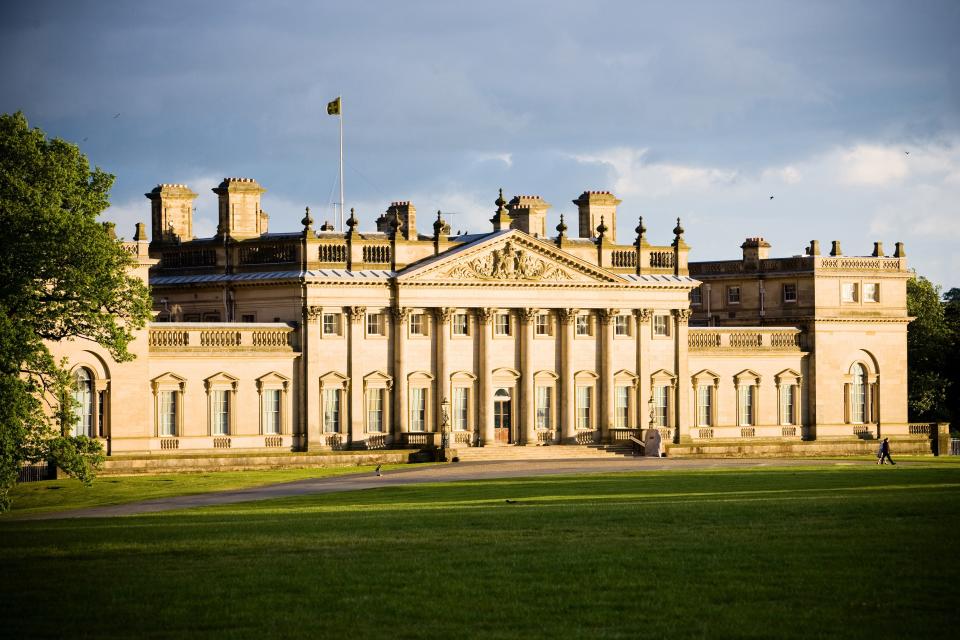The Inaugural Harewood House Biennial Showcases a Nuanced View of Craft Today
“Craft matters in all sorts of ways,” says Hugo Macdonald, curator of the inaugural craft biennial that opens at the stately 18th-century home Harewood House this weekend in the U.K. The show, titled “Useful/Beautiful: Why Craft Matters,” gathers 26 craftspeople from 15 disciplines and investigates the relevancy of craft today. “The show is about valuing craft for what it brings and how it can help us forge a better future—not just rescuing it from the past,” he says.
Craft today, according to Macdonald, is more than just whittled spoons and ceramic vessels. Craft is a mindset, not simply a product. “We wanted to get visitors to understand how embedded craft is in the everyday and is not just a marketing buzzword,” he says. And so, in addition to people working in more classical traditions, such as ceramicists Lena Peters and Reiko Kaneko, leatherworker Simon Hasan, and embroiderer Jenny King, there are also new takes on craft included, such as that of graphic designer Anthony Burrill. There's also the work of glass artist Jahday Ford, who creates pieces by digitally recording in three-dimensional form the sound of himself blowing glass. In Ford's practice, this becomes a mold, which Ford then uses to create a glass piece. “We have tried to surprise people by showing them that crafts are something that is constantly evolving,” says Macdonald. “It’s not a rejection of technology or our modern lives.”
The historic backdrop of Harewood House is both a surprising and perfect location for this emphatically contemporary biennial. Located close to the northern English city of Leeds, it is a Palladian treasure designed by John Carr and Robert Adam in 1771. Infamous cabinetmaker Thomas Chippendale furnished the house for £10,000—the most lucrative commission of his career—while Lancelot "Capability" Brown took care of the gardens fresh off of designing Blenheim Palace. None of them were known for restraint. “Everything that exists in the house has been handcrafted to some degree,” says Macdonald. Not only does the estate provide a fascinating frame in which to study craft today but it also prompts visitors to reconsider the existing craftsmanship, too. “By introducing contemporary examples of craft to these rooms, it helps people to look at what exists in a slightly different light,” Macdonald reflects.

Each contributor has been given a room in which to create site-specific work. The correspondence between works and where they are placed is incredibly alluring. Hassan’s leather vessels are positioned in the Spanish Library, called so because it is decked out in Spanish leather. The British ceramics brand 1882 Ltd has taken over the China Room. Freed of London produced ballet shoes that reside, appropriately, in the Music Room. Below the stairs, a display by Netherton Foundry and knifemaker Leszek Sikon is seen alongside copper pans in the Old Kitchen.
Undoubtedly, Max Lamb, who gathered 50 kilograms of leaves buried on the estate and then used them to dye local wool, has undertaken the most interestingly responsive project. In the Yellow Drawing Room, he displays seven rugs tufted out of the material, each one derived from a certain tree including oak, ivy, and eucalyptus. They piece together like a jigsaw. In the Long Gallery, British design dame Faye Toogood shows more than 35 pieces from her studio’s furniture, fashion, and sculpture archive. “This is a comprehensive survey of contemporary British craft skills seen through the lens of one studio,” Macdonald says of the display.
Every element of the exhibition is accompanied by text penned by each craftsperson on why what he or she does holds personal meaning and significance. Beyond the exquisite surroundings, there is a deeper question on the meaning of the word "craft" today. “We tend to think of craft and design as principally about form and function,” says Macdonald. “I want to dig deeper than that and ask about value.”
More from AD PRO: Has Instagram Made Design Shows Better?
Sign up for the AD PRO newsletter for all the design news you need to know

